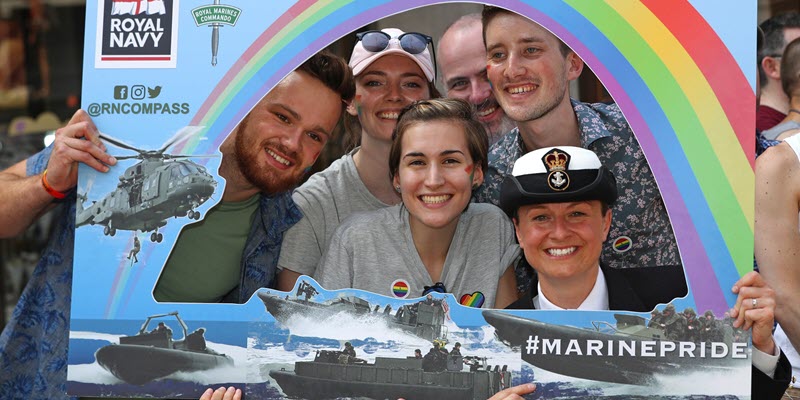| By Sydney Fairman |
Dr. Jo Stanley, academic contributor for Gale’s Global Encyclopedia of Lesbian, Gay, Bisexual, Transgender, and Queer (LGBTQ) History, is a creative historian who is internationally acclaimed for her work exploring seafaring minorities. For her part, Stanley contributed an encyclopedic entry covering the historically different roots and current similarities between the Royal Navy and Merchant Navy.
In the past few decades, The Royal Navy is no longer an organization that once persecuted those suspected of being homosexual, often wrecking their lives, and for centuries even hanged such men. In October 2018, the Royal Navy and the Royal Marines won the PinkNews prize for “public sector organizations that have gone above and beyond to become LGBT+ inclusive and show their support for LGBT rights.”

In contrast, some men (though not many women) enjoyed a remarkable and exceptional “queer heaven” in the Merchant Navy (part of the UK transport and tourism industries), especially in the period 1945 – 1985. Some people even joined the Merchant Navy because it had a reputation for being a supportive and accepting environment, even though homosexual acts by crew remained illegal until 1996.

What both navies have in common is long voyages, which means that naval men being away from loved ones for significant periods of time would often form new bonds with their shipmates. Sometimes the intense comradeship that naturally develops leads to love and to lifelong bonds. During the late twentieth century in the Merchant Navy, couples would get publicly married or divorced in the ship’s crew bar.
Dr. Stanley chose to cover this aspect of LGBTQ history in her entry for reasons below:
“I hope that future explorers of queered history will find all the entries in this encyclopedia useful in these ways, and more. Such a radical, global, digitized resource holds great potential, and may lead to exciting initiatives as yet undreamt.”
Interested in learning more? Read the full story here on Gale’s international blog.
BANNER IMAGE: 2018 Pride march in London. © Crown copyright 2019, MOD 45164190. FASHION NEWS

